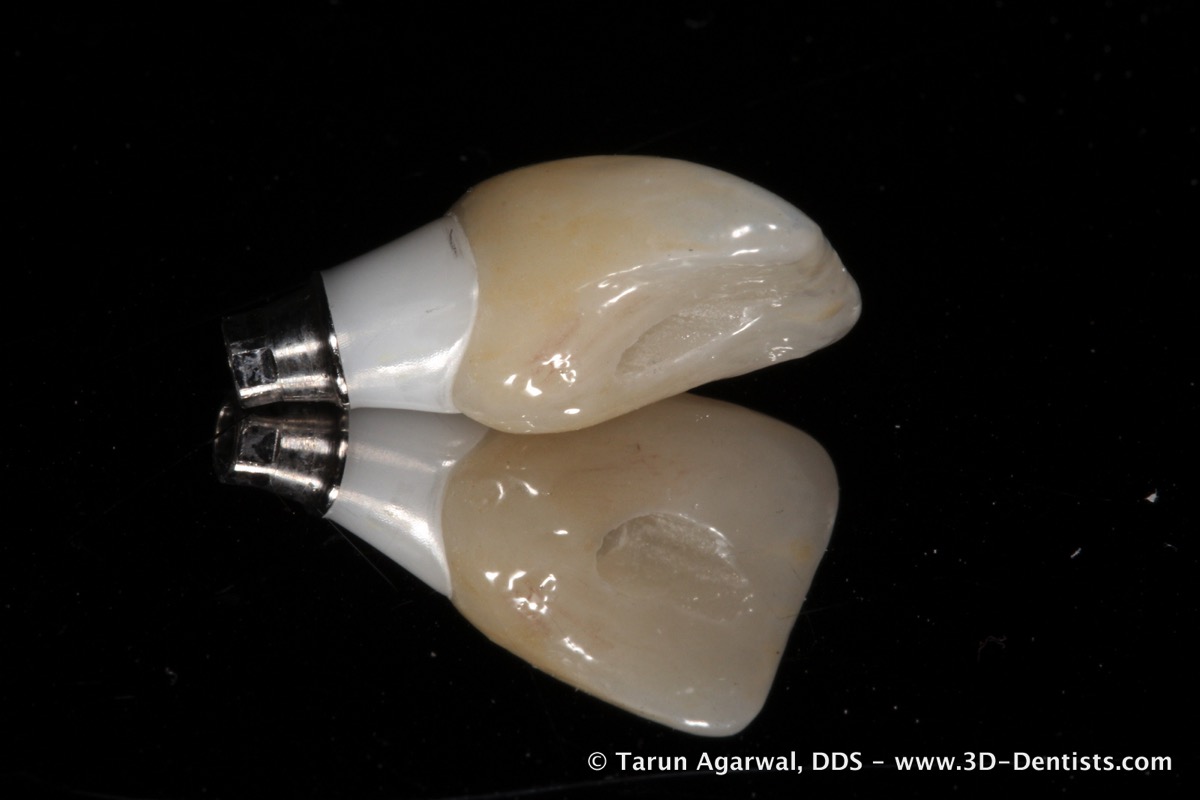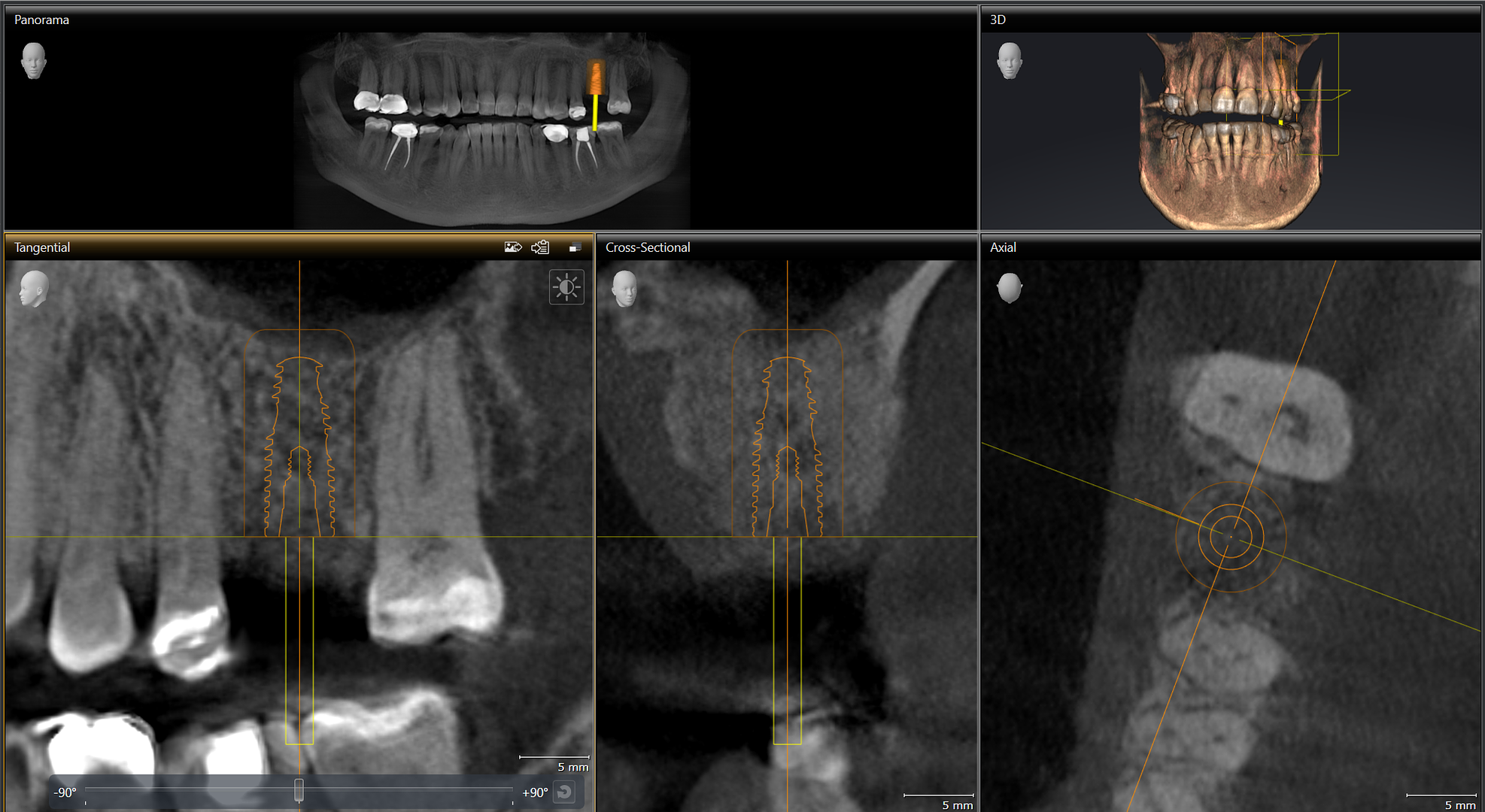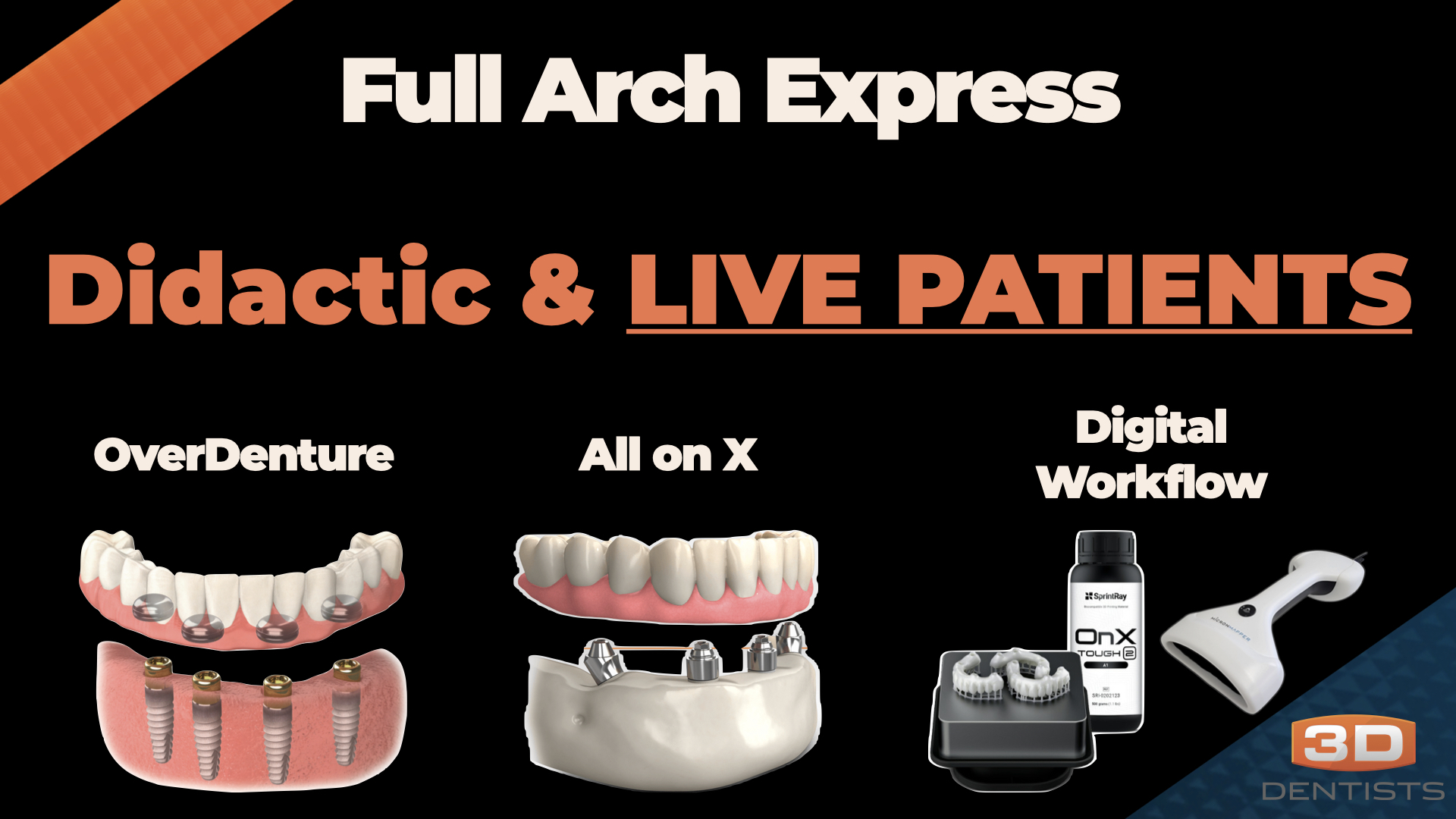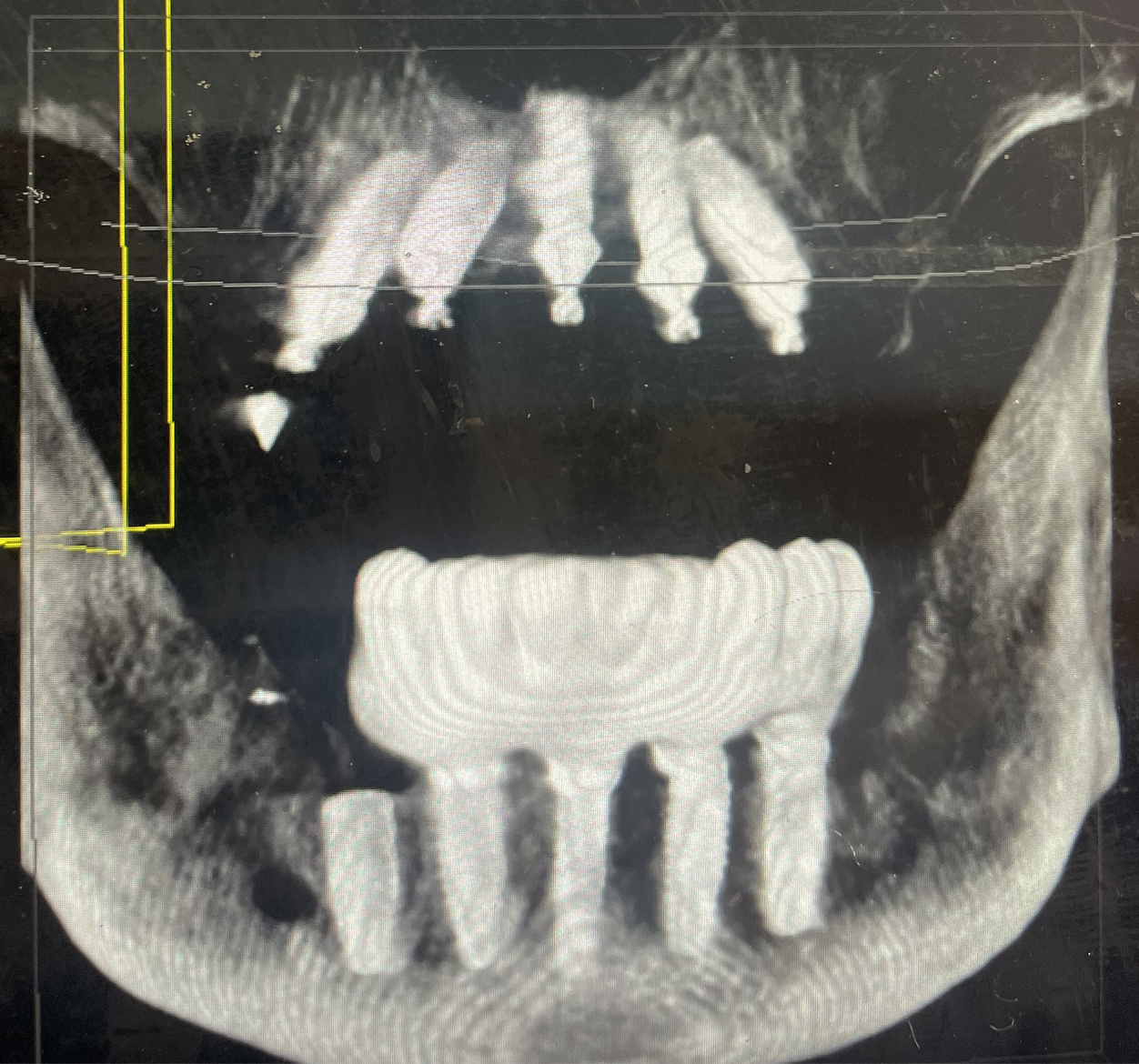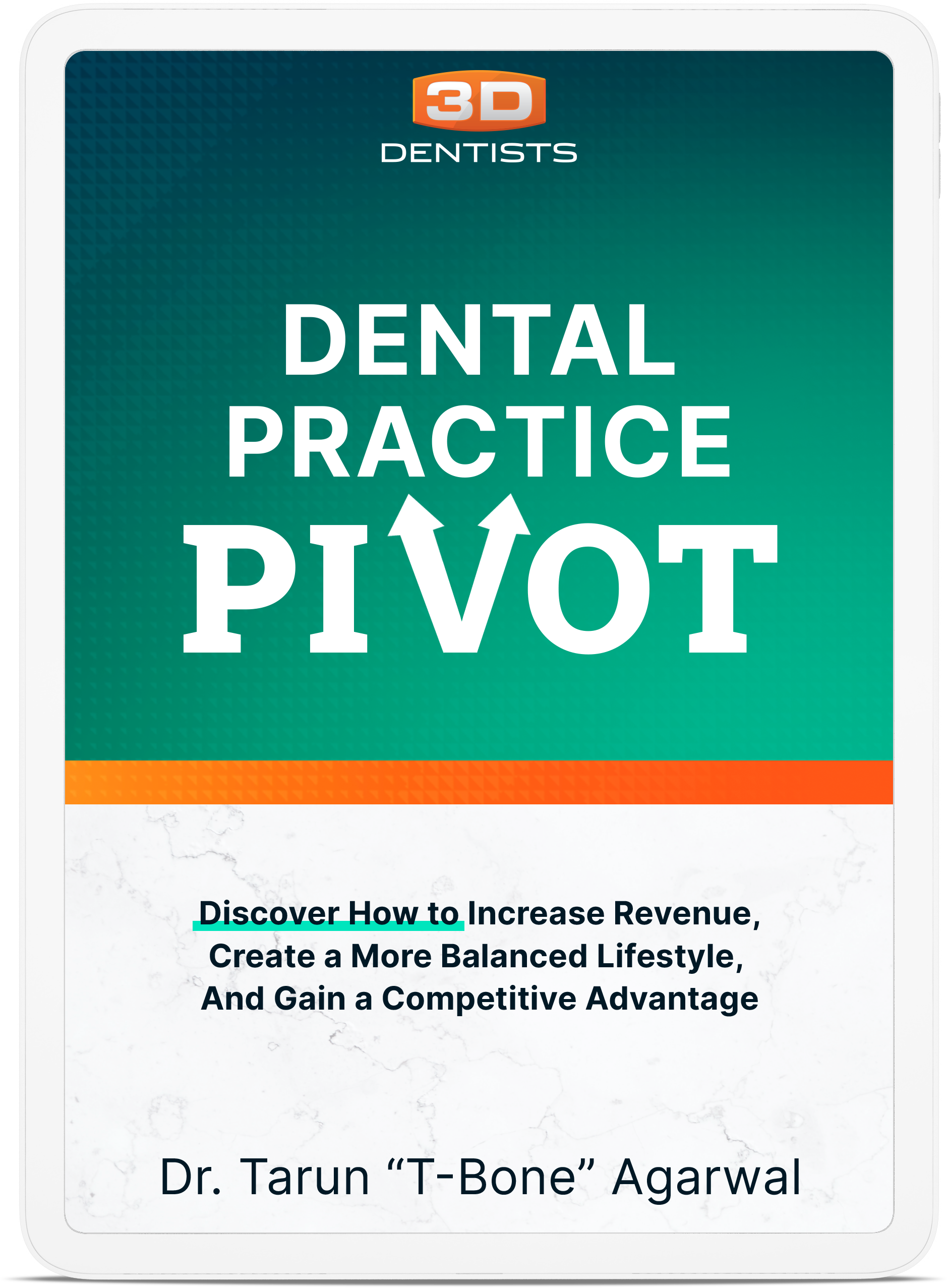I’m always talking about technology and how implant dentistry has gone digital. This time I am going to take us back in time to an original technique – the screw retained implant restoration. With the precision of CAD/CAM and material advancements, the screw retained restoration is making a major comeback.
In my eyes there is one main reason to utilize the screw retained restoration – CEMENT SEPSIS. In fact, there are many that report that nearly 80% of cemented implant restorations leave behind residual cement. We can possibly even go as far as saying that the main reason for post integration failing/ailing implants is residual cement.
So why not do screw retained all them time? The answer is that screw retained restorations require relatively ideal placement in the posterior and near perfect placement in the anterior. In my practice we strive for screw retained restorations 100% of the time. In the posterior we pretty much achieve this, but in the anterior we don’t always achieve this.
In the anterior if the screw channel isn’t in the lingual we can’t do screw retained. Well this is now changing! Recently Nobel Biocare introduced the Angled Screw Channel specific to their implants.
Let’s take a look at a clinical example.
Dustin came to our office with a vertical fractured, non restorable tooth #9. We opted for immediate placement. However, we made a clinical decision to not do an immediate loaded temp due to the risk. His implant was placed and the temp made by bonding a ceramic crown to the adjacent teeth.


While the implant is integrated it is not placed ideally. There are two minor issues – distally tipped and buccally inclined. While not apparent at time of placement, it was apparent at time of impression.
My first step for any anterior implant is the fabrication of a provisional (usually at time of placement) to train the tissue. In our office we utilize CEREC to fabricate our provisional digitally in a single visit.
It starts with a digital impression post.

We take an X-ray to verify the seating of the digital impression post.

The CEREC impression is converted to a digital model to allow for provisional design.


As you can see above the screw access is facial and distal. This would leave me with the option of a custom abutment and cemented restoration. Truthfully, this is a good option but one that I try to avoid at all costs.
The provisional was milled with an acrylic block.


Here is the provisional delivered to the mouth.

The contours are adjusted to better train and sculpt the tissue. This ability to adjust is a main reason for use of an acrylic temp. Here is the tissue after being trained for approximately 2 months.

We are now ready to take a final impression and fabricate the final restoration. To achieve a screw retained restoration we are going to utilize the ASC from Nobel Biocare. The impression is sent to the lab for restoration fabrication.
A custom ASC custom abutment is fabricated.

On top of which a screw retained emax crown is fabricated.

Here are the components to the ASC restoration.

The components are put together with the emax crown cemented to the ASC abutment extra orally.

The restoration is delivered to the mouth. Please note the new location of the screw access.

The restoration is torqued into place with the Omnigrip driver specifically designed for the ASC restoration.

The final restoration delivered in the mouth along with X-ray.


The final restoration is well integrated and blending with the surrounding dentition.

All said and done this alone is a great reason to utilize Nobel Biocare implants. We are truly able to achieve screw retained restorations nearly 100% of the time.

